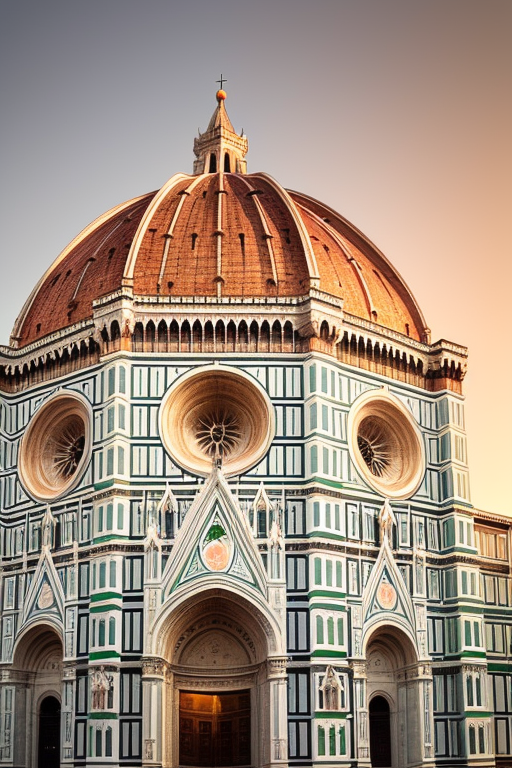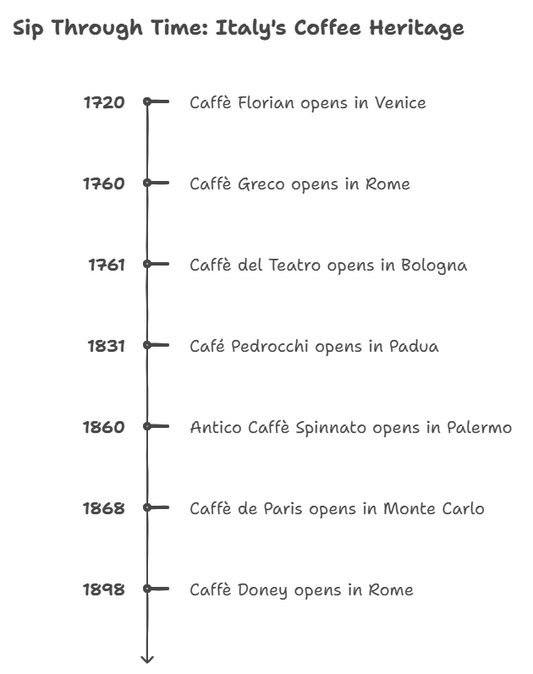
Central Italy is a region that I've had the privilege to explore, and its characteristics have left an indelible mark on my memory. I am captivated by the historical charm, cultural richness, and breathtaking landscapes that define this part of Italy. Let me share a personal story that reflects my experiences in Central Italy.
Central Region has a rich history, diverse culture, and a variety of landscapes. It encompasses several regions, including Tuscany, Umbria, Marche, and Lazio, and is known for its unique characteristics.
-
Seven Hills of Rome: Rome, the capital of Italy and part of Central Italy, is famously known as the "City of Seven Hills." These hills are the Palatine, Aventine, Capitoline, Quirinal, Viminal, Esquiline, and Caelian Hills, and they played a significant role in the city's early history. From the grandeur of Rome's ancient monuments, we shared how expansive the Roman Empire once was at the height of its power.
-
Three Noble Metals in Florence: Florence, located in Tuscany, is known for its rich cultural heritage. The city was home to three notable Florentine artists known as the "Three Noble Metals" of the Renaissance: Leonardo da Vinci (gold), Michelangelo (silver), and Raphael (bronze).
-
Twenty-Three Towers in San Gimignano: The picturesque town of San Gimignano in Tuscany is famous for its well-preserved medieval architecture. It is often referred to as the "Town of Fine Towers," with originally 72 towers, and today, it still boasts 23 of these iconic towers that contribute to its distinctive skyline.
-
Two Independent Countries in Central Italy: Central Italy includes two independent countries within its borders. Vatican City, the smallest independent state in the world, is an independent city-state within the city of Rome. Additionally, the Republic of San Marino, located in the Apennine Mountains, is another independent microstate surrounded by Italy.
-
Four Regions in Central Italy: Central Italy comprises four main regions: Tuscany, Umbria, Marche, and Lazio. Each of these regions has its own unique cultural and natural attractions, making Central Italy a diverse and culturally rich area to explore.
Here are some key characteristics of Central Italy:
-
Historic Cities: Central Italy is home to some of Italy's most famous and historic cities, including Rome (the capital of Italy), Florence, Siena, and Perugia. These cities are known for their beautiful architecture, art, and historical significance.
-
Art and Culture: Central Italy has played a significant role in the development of Italian art and culture. Florence, in particular, is known as the birthplace of the Renaissance and is home to renowned museums, such as the Uffizi Gallery.
-
Cuisine: Central Italian cuisine is celebrated for its simplicity and use of high-quality, locally sourced ingredients. Dishes like pasta, olive oil, and wine are staples in the region. Tuscany, for example, is famous for its Chianti wine. Umbria, one of the regions in Central Italy, is also renowned for its production of black truffles. The town of Norcia in Umbria is particularly famous for its truffle markets and the annual "Fiera del Tartufo" (Truffle Fair) held in late winter.
-
Stunning Landscapes: The region boasts diverse landscapes, including rolling hills, vineyards, olive groves, and picturesque countryside. Central Italy is also known for its beautiful coastline along the Tyrrhenian Sea, with towns like Cinque Terre and the Amalfi Coast offering breathtaking views.
-
Roman Heritage: Central Italy is deeply connected to the Roman Empire. Rome, the capital, is often referred to as the "Eternal City" and is packed with ancient monuments, such as the Colosseum, Roman Forum, and Pantheon.
-
Religious Sites: Central Italy is home to many important religious sites, including the Vatican City, the center of the Roman Catholic Church, and the Basilica of Saint Francis of Assisi in Umbria.
-
Tradition and Festivals: The region hosts numerous traditional festivals and events that celebrate its rich history and culture. For example, the Palio horse race in Siena is a famous annual event that dates back centuries.
-
Artisan Craftsmanship: Central Italy is known for its artisan craftsmanship, including leather goods, ceramics, and textiles. Cities like Florence are renowned for their high-quality craftsmanship.
-
Hilltop Towns and Villages: Central Italy features charming hilltop towns and villages with narrow streets, ancient architecture, and stunning views of the surrounding countryside. Examples include San Gimignano and Orvieto.
-
Natural Beauty: The region is home to beautiful national parks and nature reserves, such as the Gran Sasso and Monti della Laga National Park in Abruzzo, offering opportunities for outdoor activities like hiking and wildlife watching.
A few years ago, I embarked on a journey to Central Italy with my family, and we found ourselves immersed in the enchanting city of Florence. The moment we set foot in the historic heart of Tuscany, I was immediately struck by the city's timelessness. Wandering through the cobbled streets, I couldn't help but feel as though I had been transported back to the Renaissance era. The magnificent Florence Cathedral, with its iconic red-tiled dome, stood as a testament to human creativity and architectural brilliance.
We delved into the world of art and culture, visiting the Uffizi Gallery, where masterpieces by Botticelli, Michelangelo, and da Vinci came to life. The art was so vivid and impactful that I felt an emotional connection to the artists who had once roamed these very streets.
But Central Italy is not just about its cities; it's also about its picturesque countryside. We ventured into the rolling hills of Tuscany, where vineyards and olive groves stretched as far as the eye could see. The landscape, dotted with charming farmhouses, was a painting come to life. It was in this region that we enjoyed some of the most authentic Italian cuisine, savoring dishes prepared with fresh, locally sourced ingredients, complemented by the region's famous Chianti wine.
One of the highlights of our journey was a visit to the ancient town of Siena, renowned for its Palio horse race. The town's medieval streets and the magnificent Piazza del Campo were the backdrop for a thrilling and historic event that captured the essence of Italian culture and tradition. The Palio was a powerful reminder of Central Italy's deep-rooted history and its ability to blend the past with the present seamlessly.
We also ventured off the beaten path and discovered charming hilltop villages like San Gimignano and Montepulciano, each with its unique character and breathtaking views of the surrounding countryside. These hidden gems felt like a step back in time, offering a sense of tranquility and authenticity that is often lost in the hustle and bustle of modern life.
As we made our way further east into Umbria and the Marche, we encountered equally captivating landscapes and a more relaxed pace of life. The hill towns of Orvieto and Urbino, with their rich history and artistic heritage, painted an intimate portrait of Central Italy's allure.
Central Italy's characteristics, a harmonious blend of history, culture, and natural beauty, left me with a profound appreciation for this region. It is a place where the past lives on in every cobblestone, every painting, and every plate of pasta. It is a region that invites you to slow down, savor life's simple pleasures, and become a part of its enduring story. It's a place that, once experienced, lingers in your heart and beckons you to return, and I know I will.
As you delve deeper into the enchanting characteristics of Central Italy, you may be curious about the lifestyle and health of its inhabitants. If you've ever wondered about the average height and weight of Italians, I invite you to click on this intriguing article on "Italian Height and Weight" to gain insights into this fascinating aspect of Italian culture.




